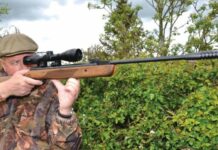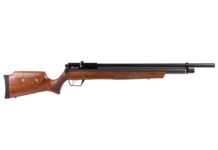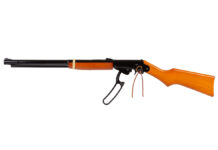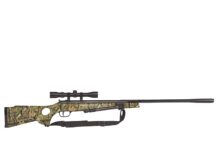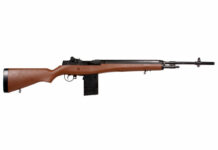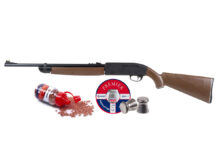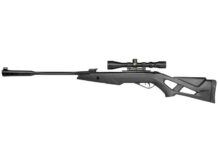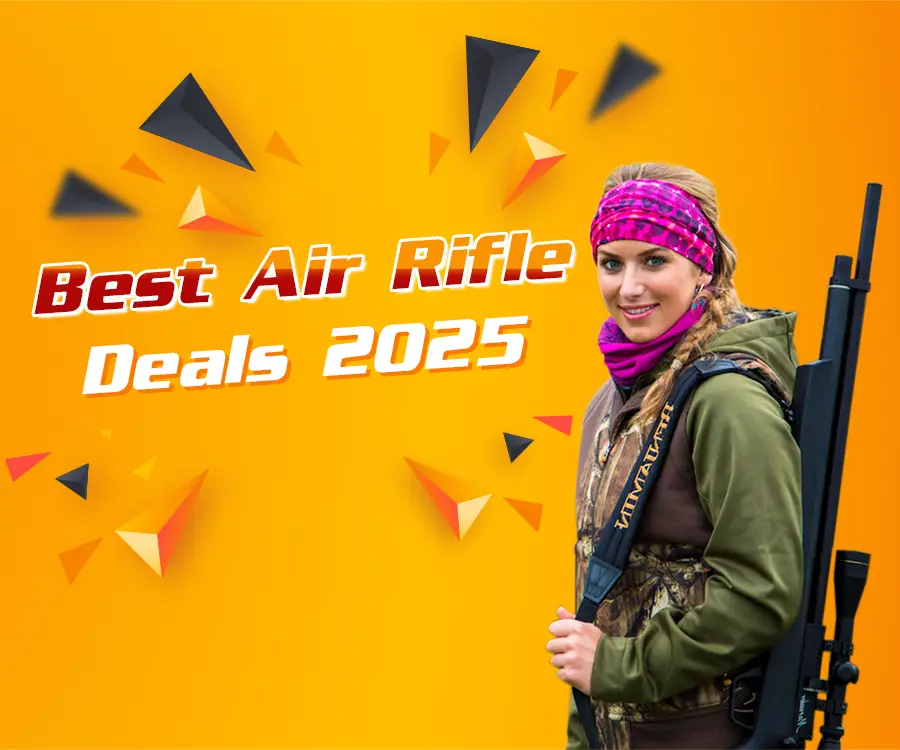There was a time when I was exclusively in love with the 7.62x51mm for every rifle task.
According to the gun magazines at that time, the 5.56 was an abject failure in both Iraq and Afghanistan. So, I became convinced that the round was a poodle shooter.
Then, I joined the infantry and went to figure it out for myself.
Over my deployments, I carried weapons chambered in both 7.62 and 5.56 and got a good idea of how both worked and where they were successful.

Like most things in life, they both have their place and the roles in which they succeed. The idea that you have to choose one over the other is silly.
Own both.
From there, you can choose the right tool for the task at hand.
Before you go selecting one or the other, though, it helps to know the real difference between them. Where do they stand in a side-by-side contest and when should you use one over the other?
Lucky for you, that is what we are exploring today. We’ll touch on the history of each round, its purpose, and ultimately which is the right cartridge for the job.
Table of Contents
7.62x51mm NATO
With so many 7.62 rounds, I have to distinguish this one as x51mm.
This .30 caliber projectile has long been a popular choice for both rifles and handguns. Developed as a replacement for the .30-06, it was standardized with our European allies through the newly created NATO.
The 7.62x51mm became the round de jour for infantry rifles and machine guns.
Though it was short-lived as an infantry rifle cartridge in the United States, it saw wider use across NATO.
It’s worth mentioning, this caliber still sees action in sniper rifles, designated marksman rifles, and machine guns within the U.S. military.
During the development of the 7.62x51mm, Winchester saw the commercial potential and developed the .308 Winchester.
The .308 Win. is, fundamentally, the same round but intended for the civilian market.
5.56x45mm NATO
You’re probably used to see 5.56x45mm NATO a lot more than 7.62x51mm NATO. There’s a reason for that.
The 5.56 was the successor to the 7.62 in terms of general military use. It became the infantry cartridge of choice during the Vietnam War.
Developed from the commercial .223 Remington, minor alterations were made during the 5.56’s development.
Shooter Beware: 5.56 should NEVER be fired in .223 marked rifles. (But .223 can be fired in 5.56 rifles.)

After its initial growing pains, the 5.56 cartridge proved to be incredibly successful.
The round serves to this day in the hands of most U.S. troops.
Paired with the vast majority of America’s favorite rifle — the AR-15 — 5.56 NATO has become one of the most popular rounds in the nation.
The Money
Before we dive into the performance, size, and uses of these calibers, let’s talk about the most common make or break for anything…
Money.
5.56 is the substantially cheaper route.
The cost of 5.56 versus 7.62 NATO is often a 50% difference in price per round. Rarely do you see 7.62 NATO below 40 cents per round.
Note: those are normal prices and we are far from normal at the time of this writing.
Whenever an event occurs that drives up demand, the first batch of rounds to hit sky-high prices are almost always 9mm and 5.56. The year 2020 is no exception with 5.56 NATO a rarity in the marketplace and crazy expensive when it does pop up.
At this point, 5.56 and 7.62 NATO are both more than a buck a round.
The Size Difference
You can easily visualize the size difference when you utilize the metric measurements to describe the rounds.
The 7.62x51mm is a much bigger round — not only in projectile size but also in weight and case length.
5.56 ammunition, on the other hand, is shorter in length and thus lighter to carry.
Let’s run some numbers.
A fully loaded 30-round AR-15 magazine weighs about 16-ounces, give or take. A fully loaded 20-round SCAR H magazine weighs 17.6-ounces.
That’s a substantial increase in weight with a decrease in ammo.

Ask any soldier, the average infantryman would rather carry more ammunition. More ammo equals more suppressive fire while bettering the ability to maneuver.
Let’s be honest here, the M16 saw some growing pains in its early days. That said, the M16’s adoption proved to be successful just based on the logistics of combat.

In my experience as a machine gunner carrying the M249 light machine gun, I was able to tote 1,000 rounds of linked 5.56 ammunition. The ammo was lightweight, as was the weapon.
When I took the 7.62 chambered M240 medium machine gun, I carried only 600 rounds and distributed 400 more throughout my squad.
Performance Matters
While 5.56 might be the lighter ammo weight, it’s also lighter in performance power.
The 7.62x51mm has some real punch behind it with the round retaining tremendous energy compared to the 5.56. The heavier duty 7.62 NATO is still used in the military due to the extra power and range it offers.

When comparing the 5.56 M885A1 load and the 7.62 NATO M80 round, we see the big differences upfront.
7.62 retains over 1,700 foot-pounds of energy at 500-yards versus 5.56 which hits 950 foot-pounds at 500-yards.

Pushing out to 1,000-yards, the 7.62 M80 loads retain over 1,000 foot-pounds of energy.
That extra power makes it a more capable long-range round.
Even at moderate ranges, it outperforms the 5.56 ballistically, penetrating deeper and transfering more energy.

Remember when we said the .308 Win is the civilian form of the 7.62 NATO?
.308 Win’s performance, like its 7.62 sibling, earned it high praise among hunters. Power paired with a short-action capable design and moderate recoil made the .308 Win family an excellent round to take down large game on hunts.

Though the 7.62 NATO load whips the 5.56 in range, power, and penetration, that all comes at a cost.
What is that, you ask?
Cartridge length and weight as well as muzzle rise and recoil.
When compared to the 5.56, it’s easy to see why the 5.56 is called a poodle shooter.

Overall, 5.56 is a much kinder, gentler experience.
There is something to be said for too much power and too much penetration.
A 7.62 NATO load is a bit much for home-defense when you start factoring in neighbors.
Miss a shot and that very powerful round will be flying very far and through lots of potential walls.

Where the 5.56 Dominates
The 5.56 NATO is one of the best infantry fighting calibers in the world.
It’s fought for decades and done an excellent job at its role as a general infantry cartridge.
Sure, it’s not perfect, but the cartridge has proven to be a reliable warfighting cartridge.

Best used within 300-yards, the 5.56 can be pushed out to 500-yards.
It’s a great close-quarters fighting cartridge and has very little risk of over-penetration should a miss occur.

Recoil and muzzle rise are naturally quite limited, which makes it an excellent round for shooters of all sizes.
Well-suited to the competitive market where speed rules, the 5.56 is a great companion in multi-gun events. The 5.56 AR-15 absolutely dominates the competition!

Competitions aside, 5.56/.223 Rem. can be used for close-range hunting on small to medium game.
Anything larger than a whitetail deer, though, should be taken with a larger, more potent cartridge.
The 5.56 and .223 Rem. are perfect for targets closer than 300-yards and for shooters looking for a lightweight, compact platform.
Where the 7.62x51mm Rules
The 7.62x51mm and .308 Win. are both powerful cartridges with long-range potential.
Perfect for Precision Rifle matches, these rounds, in general, work well in long-range shooting events.
They have their place in the heavy metal division of multi-gun matches as well.

If you’re looking to get into long-range shooting — and by that, we mean 500-yards plus — starting with the 7.62 NATO is one of the easiest routes to take.
Ammo is common, affordable, not to mention, lots of data, gear, and optics are produced with 7.62 NATO in mind.

.308 Win. is one of the most popular North American hunting cartridges. Used in bolt-actions and semi-auto guns with easily manageable magazine platforms, the cartridge can take deer, hogs, predators, and even bear with the right rifle.
When you need a little more range and a lot more power to achieve a task, the .308 Win and 7.62 NATO loads are perfect.
Favorite 5.56 and 7.62 NATO
Ok, now you know what’s what…so which brands do we prefer at Pew Pew Tactical?
Glad you asked.
Here is a collection of our favorite 5.56 and 7.62 NATO rounds. (Don’t blame us if they’re out of stock, though. Ammo shortage, and all…)
Conclusion
Let’s be real, 7.62 and 5.56 NATO are excellent fighting cartridges with long, battle-proven histories. 5.56 may be better suited for home defense and 7.62 rules long-range matches and big-game hunting, but both cartridges perform well in their respective roles.
So how do you as the shooter choose between the two? Identify the task, target, and goal. From there, you can choose a caliber and platform that fits those metrics.

Cartridge wars are always silly, and people rarely prove one popular cartridge is better than another. Different rounds have different purposes, and there is plenty of room at the table for everyone to sit.
Which is for you? 5.56? 7.62 NATO? Both? Let us know below which you prefer and why. Want more? Check out the Best 7.62x51mm Ammo and the Best AR-15 Ammo!




